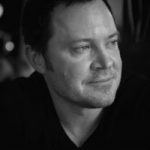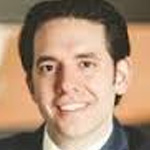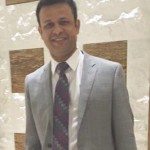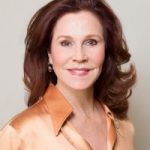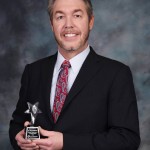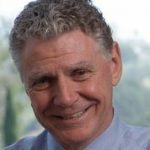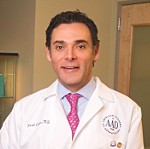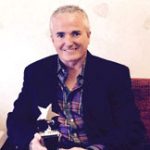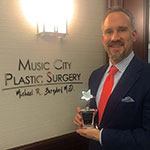Success Stories
Dr. Gregory Buford – 2015 Englewood City Winner in Plastic Surgery
I was very impressed that this new site actually was developed for addressing peer to peer reviews. I love the fact that you are able to comment on the leaders within your own industry and the fact this is not a popularity contest. This is actually based upon merits and reviews from other physicians, and not simply as many of these sites are, who happens to work at a specific hospital.
Dr. John Paul Tutela – 2015 West Orange City Winner in Plastic Surgery
I thought it was really a nice setup where they are basically based on recommendations from your own peers. So it is not necessarily just that your patients appreciate your work in your field, but actually other physicians. The award is really kind of given based on the review of other physicians in your area.
Dr. Hasan Ali – Top Plastic Surgeon for the Month of February / March 2016
Nowadays when there are lot of doctors in any specialty and people are always going online and they are reading the reviews of the doctors, this kind of award and this kind of platform is really helpful for selecting a doctor by patients. And also for the colleagues of other specialties, when they decide to refer to a particular doctor. They can always find out the doctors who are top doctors, who has good reviews, and they can always recommend these doctors for their patients.
Dr. Mary Lupo – 2014 & 2015 New Orleans Winner in Dermatology
It motivates me to continue to do more and better things. It always keeps you engaged in your profession when you interact with other people who keep you doing your best.
Dr. Ken Anderson – 2015 USA National Award Winner in Plastic Surgery
As the National Winner of the Doctor’s Choice Award in Plastic Surgery I display the award and trophy at my center to assure patients of outstanding and ethical care, and that my peers have endorsed me as a surgeon that they would recommend for hair restoration surgery services.
Dr. Neil Mcleod – 2014 West Hollywood Winner in Dentistry
Well I was surprised and highly complimented to receive that particular award particularly as my colleagues have voted for me to have that position I consider it a great honor thank you. I hope I live up to it, the award and prove deserving of it.
Dr. Joel Cohen – 2015 Englewood Winner in Dermatology
I think these awards help us learn a lot about our colleagues, and can be very helpful in many situations – such as when a patient moves to a different region of the country, we can help locate the physicians who have won these awards.
Dr. H.L. Greenberg – 2014 Las Vegas Winner in Dermatology
I am not sure how it happened. I think somebody reached out to me either on LinkedIn or from the website itself. Actually I think I was asked to review a friend in the colleague. I said it is great because this is a peer reviewed source. And I said I wonder if they will consider me and that is how that worked out.
Dr. Jim Arnold – 2014 USA National Award Winner in Dentistry
Interview with 2014 National Award Winner
Congratulations, Dr. Arnold, this is the first time we are awarding Doctors’ Choice Awards in Dentistry in 2014! What are your thoughts on being the first winner?
I am extraordinarily honored to have been nominated and even more excited about actually winning this award. Being recognized by my peers for my commitment to excellence in dentistry is truly humbling. It’s really a testament to my awesome team and their hard work in making our practices something special.
Dr. Arnold, how significant or how essential is it for dentists to belong to a professional association or organization as they continue to practice?
I think that it’s really important for dentists to work together for the betterment of our great profession. Professional organizations like ACE, the AACD, and the ADA represent the best that dentistry has to offer, and dentists should all utilize the combined knowledge and resources of these groups. This helps them to be the best that they can be and to enjoy the many benefits provided by these fantastic associations.
Can you also explain why? Both for dentists just graduating and for established dentists as well?
The ADA provides dentists with a political voice and works hard to improve the entire profession so that dentists are better able to run their practices in the way that they see fit. This creates an environment within which practices can provide great care to patients while continuing to make a good living. Every dentist – new graduates and experienced dentists alike – should be a member so that they can support the ADA in the way that the ADA supports THEM.
ACE is a fantastic group of like-minded, well-educated dentists who are focused on delivering exceptional esthetic care in practices that are also very profitable. Their partnership with Smile Source also give it’s members collective bargaining power with dental supply companies and dental labs. These relationships save the membership thousands of dollars every month, allowing them to make more money without having to compromise their quality of care. Additionally, they provide their members with extraordinary continuing education and an environment that is conducive to building great relationships amongst colleagues. Young and well-seasoned dentists all share in the process of education, huge savings, and mentorship.
The AACD is the number one advocate for high-end cosmetic dentistry in the world, and it’s members are all encouraged to work hard to achieve the highest ideals of perfection. Being a member gives dentists access to education with the best minds and hands in dentistry. The educational opportunities, exposure to new techniques, new materials, and relationships are really unique.
Joining the ADA right out of dental school gives dentists an opportunity to have a voice in the legislative process that drives our profession. Becoming members of ACE and the AACD provide young dentists with opportunities to expand their minds, build great clinical skills, make a better living, and get to know incredible, experienced dentists from whom they can learn a great deal.
We also want to ask you, what kind of culture have you created in your practice?
We have established a culture that is conducive to collective productivity and individual satisfaction. We stopped referring to our team as a “staff” a long time ago because we truly have a TEAM. That means that they are all on the same page working toward the same ideals, helping one another, and creating greater comfort for our patients. Our team treats every patient like they would a member of their own family, building relationships, rather than just building rapport. Great patient dental care and service, strong relationships, and mutual respect are the ideals to which we all aspire.
What is it like for your employees to work with you?
The Smiles By Arnold & Associates doctors and team work together to create a relaxing environment for our patients and a happy environment for one another. They have a lot of autonomy to make decisions without me having to micromanage everything. Our relationships are built upon trust – trust that they will make good decisions and do the right things for one another and our patients. When we need another employee, the TEAM selects who they want to work with. That minimizes the risk of conflict that can be caused when the wrong person is hired. The team is responsible for finding people with whom they want to work. The office managers do the interviews, select the top two candidates, and the team ultimately decides who is the best fit. While having some experience is important, the final decision generally comes down to having the right personality and work ethic to not only fit in, but to improve upon what we are already doing.
And what is it like for your patients when they come to you and your staff for dental care?
Patients are usually blown away by the unique experience that they have with us. They find a team that will not only listen to them attentively and take their concerns very seriously, but they find talented, compassionate dental professionals who become their advocates for better oral health and improved esthetics. Spending a little time with our team, most patients feel very relaxed due to the authenticity of every person they meet, and they look forward to their visits with us. Knowing that they have the option of conscious sedation puts even the most anxious patients at a ease. Ultimately, I think that patients KNOW that they are in the right office within minutes of arriving, and that is a real testament to my incredible team.
Do you think it is important to clearly establish a practice culture in today’s dentistry? If so, why?
Establishing the right practice culture isn’t optional anymore – it’s essential. With so many options for patients today, it’s critical to differentiate yourself in a positive way. If your practice environment and culture aren’t unique and authentic, then you will never stand out, and you’ll fail to attract and keep great patients. If you create a culture of positivity and have a happy team, then the patients will sense this, know that they are in the right place, and THEY will be more positive and happy. If your team is unhappy, then patients will sense this, wonder what’s wrong, and they won’t be as likely to say “yes” to proposed treatment, and they won’t be likely to stay with you. That means that the team’s happiness and job satisfaction comes first because that is the most critical component to building the right culture for our patients.
What advise do you have for dentists with regard to continuing education?
I probably attended TOO MUCH continuing education 10-12 years ago. I was on the road about 25 weekends per year attending about 400 hours of CE for a long time. It was overwhelming at times, it was very expensive, and the time away made it difficult to implement the things that I was learning. Additionally, it put a huge burden on my team – traveling and working really hard to learn and grow along with me.
I would recommend a more measured approach, taking one major course every six months to a year, learning it thoroughly, implementing it completely, and then moving on to the next course. This approach will decrease the stress level for the doctor and team immensely and make the learning process much more effective and will ultimately benefit the practice and patients in a much bigger way.
What do you think will be the best advise you could share with them on planning ahead?
I would spend some time thinking seriously about WHAT you want to learn and add to your practice. Then I would carefully consider all of the options in that area of dentistry prior to selecting the course that seems like the best fit. Set up a budget, a timeline, and a step by step plan for implementing the changes to your practice you want to make. Be sure that your team learns the new procedures, technology, and materials along with you because THEY are the ones who will ultimately be responsible for putting it altogether and making it work. Try not to do too much at the same time, as you’ll be less likely to be successful.
As a dedicated dentist as you are, what three leadership traits would you say are the most needed to run a successful/thriving practice?
As a leader, you have to be a good listener, and you have to trust your team. If you hire the right people, they will have knowledge, experience, and ideas that you can utilize to improve your practice. Your team members can often be your best resource to ensure continued success. They are also on the “frontline”, seeing and hearing things that you don’t. If you listen to what they have to say and take them seriously, you’ll make better decisions that can positively impact your practice.
You also have to be decisive. There are so many decisions to make daily in every dental practice, and most of those decisions have to be made quickly. If decisions aren’t made decisively by the practice leader, then the team (and sometimes patients) are left in limbo wondering what’s going to happen. You will sometimes make mistakes, but most of the time, these mistakes can be corrected. Most of the time, you can trust your instincts, and these decisions will have the desired result. For those less-than-ideal outcomes, it’s simply a learning experience that will allow you to grow and make a better decision the next time around.
Additionally, good leaders have to learn from their experiences – both positive and negative. If you can analyze your decisions and the outcomes effectively, then you can learn and grow from everything you do. That will ensure that even with slight detours, bumps in the road, and outright mistakes, you’ll continue to move in the right direction, moving ever closer to developing the practice of your dreams. When you track your results, then you can do more of what works and less of what doesn’t work. Failure to recognize this will severely curtail opportunities for growth.
Michael R. Burgdorf, MD – 2014 USA National Award Winner in Plastic Surgery
Congratulations to you Dr. Anderson on being the national winner of the Doctors’ Choice Awards in Plastic Surgery 2015! How excited are you on winning this prestigious award?
Receiving the nominations and being voted the National Winner of the Doctors’ Choice Award in Plastic Surgery for the U.S.A. is a huge honor for me and my entire staff at the Anderson Center for Hair.
You have received great reviews from your peers in the industry. So what was your first thought on Doctor’s Choice Awards? And what drove you to partake in it?
We work very hard to ensure an outstanding patient experience for each and every one of our patients. The fact that my name is on the front door of our center, and is the name of my practice is more than merely descriptive. It means my reputation and the reputation of the Anderson Center for Hair is on the line with every patient and with every surgery. Our patients can see the many patient reviews that we have online, with all the details of their experiences at our center. The Doctors’ Choice Award helps to let patients know that not only do other patients give my practice a 5 star rating across the board, but that other physicians and surgeons from around the country do as well. The opinions of physicians and surgeons in the United States of a particular physician are especially valuable, as many of these colleagues have spent time in the Operating Room with that physician, and can offer insights that are simply not available to the public.
How will winning this award affect your practice?
As the National Winner of the Doctor’s Choice Award in Plastic Surgery I display the award and trophy at my center to assure patients of outstanding and ethical care, and that my peers have endorsed me as a surgeon that they would recommend for hair restoration surgery services.
Can you tell more about your educational qualification and how long have you been established in your practice?
Some of the surgeons who nominated me for the 2015 Doctor’ Choice Award in Plastic Surgery were my mentors from my years in surgery training at the University of Michigan Department of Otolaryngology-Head and Neck Surgery (ENT surgery). My formal surgical training is in ENT surgery, in which I spent 6 years following medical school. I then completed a fellowship in Facial Plastic and Reconstructive Surgery, and I am board certified in both surgical subspecialties. In 2003 I joined a busy practice in Beverly Hills, California, that focused 100% on surgical hair restoration.
It’s a field that is very dependent on the artistic skills and judgement of the surgeon, and as a medical illustrator I was fascinated. I remained in Beverly Hills until 2008 when I was recruited by Emory Healthcare to be the Chief of Hair Restoration Surgery at the Emory Facial Center in Atlanta, Georgia. In 2012 I founded the Anderson Center for Hair, a new, state-of-the-art facility dedicated to providing the most natural, permanent hair restoration results to both men and women, with an emphasis on artistic concepts, patient comfort, and natural, permanent hair restoration results. We’re the first and only practice in the State of Georgia to offer the ARTAS® Robotic Hair Transplant system, and I’m the only physician in Georgia to be recommended by the American Hair Loss Association.
What kind of culture have you created in your practice?
One of this things of which I am most proud is the team I have been fortunate to assemble at our center. From the front office to the consultation office to the surgical suite, every person is very strong at their position, and we work together like we’ve been doing it for years. That’s because we have; I was not in a rush to build a team for my new center as I know that one of the keys to success is a very strong support team. Each member has had years of experience in the field, and with such a success-oriented culture of outstanding patient care and exacting surgical standards we can offer the best hair restoration options for anybody with hair loss. Patients can expect the highest ethical and surgical standards. Some patients will be turned down; not every person with hair loss is a candidate for a hair restoration surgery.
What was your greatest challenge which you had to face as a surgeon or leader?
That’s a great question. I would have to say it was leaving the university setting at the conclusion of my fellowship in Facial Plastic Surgery and entering the “real world” of elective facial plastic surgery in Beverly Hills, California in 2003. At the University of Michigan I was not under significant time constraints during an operation. It’s a teaching hospital, and if I needed an extra hour to complete a nasal reconstruction or a blepharoplasty (e.g.: eyelid surgery) it was afforded to me without issue. However when working at a busy private practice in Beverly Hills it’s an entirely different ballgame. I joined another physician in his busy hair restoration surgery practice, and was given a schedule to follow to help pace my surgeries for the day before seeing patients in consultation in the afternoons. It required me to perform 2 hair restoration surgery procedures every day except Sunday, and to have both surgical procedures completed by 1:00PM, as that was when the patients would start to arrive for their appointments. I would see patients from 1:00PM to 6:00PM, Monday through Saturday, after having performed 2 hair restoration procedures that day. What I did not enjoy was having to rush through surgery; sometimes both patients for any given day had undergone previous hair restoration surgery and were otherwise complicated surgical procedures. It didn’t really matter how complex the cases were, they had to be completed by 1:00PM because the patients were going to start arriving at 1:00PM for their appointments. So, I was forced to operate faster and faster as I became more talented and experienced at such a nuanced surgical procedure. This was an issue with which I had not dealt previously, and was somewhat uncomfortable hurrying along an elective cosmetic surgical procedure. Hair restoration surgery is like creating art to me. I’m a formally trained medical illustrator, and I know from experience that you cannot rush along an illustration, or a painting, and expect it to be just as good as if you had taken your time. Initially I solved the problem by just pushing back the start time for the day, from 8:00AM all the way back to 6:00AM, but as I became more familiar with the subtleties and nuances of surgical hair restoration, even this didn’t seem like enough time as I’d want to accomplish more and more as the months passed. When I left that practice in 2005 to start an independent practice, I promised myself that I would never do more than one procedure per day. It just makes sense to me: if you are going to create a masterpiece work of art, you’d much rather have all day to complete the masterpiece rather than having to create two masterpieces by 1:00PM. So when I left to practice independently I limited my schedule to only procedure per day. This is a core principle of mine with regards to the way I practice hair restoration surgery, and it continues to this very day. I perform only one hair restoration surgery procedure per day, assuring both me and my patient that I will have my very best artistic and surgical skills available for the duration of the procedure, at whatever pace I’d like to keep, without the worry of being rushed. My patients and I like it this way, and it’s something that is not going to change.
I understand you are not simply an experienced surgeon but also a prominent educator, medical illustrator and a researcher. How do you balance yourself between these roles?
Time is our most valuable resource, so balance is critical. Of course my primary focus is our patients; I’m a very hands-on surgeon, and I like to be very involved with my patients’ care, which unfortunately tends not to be the case in the field of hair restoration surgery. I am asked to give talks and lectures, and I chose carefully from these opportunities. For instance I chose to deliver a lecture to the Japan Society of Clinical Hair Restoration in Okinawa, Japan. The subject of the lecture was the Follicular Unit Extraction (FUE) method of hair restoration surgery, and my 10 year experience with the technique. I do turn down other opportunities, however. The more academically-oriented the subject of the talk, or the association that asked me to deliver a lecture, the more likely I am to take the opportunity. This year I am starting an outreach program to schools of cosmetology and hair design to offer educational lectures and classes in association with these prestigious training programs, such as the Paul Mitchell Schools. Research data show that 41% of men with hair loss first ask their hair stylist about it. The percentage of women is even higher. I’m looking to provide expert educational classes to these students to help prepare them for the questions and concerns they will receive on the outside world. Despite all the training and know-how that these students are taught about how to care for and style hair, sometimes the education in hair loss and how to manage, prevent, and reverse hair loss is not as available, and that’s where I’d like to help. There are so many options for people suffering with hair loss these days, and a lot of people think the surgery results still look like pluggy doll’s hair. I believe getting the word out starting with the very people who cut and style hair could be effective in letting people know that they don’t have to suffer with hair loss any longer.
Combining these educational efforts with research activities is not as difficult as it sounds. For instance we’re about to start a study about the effects of stem cells on hair loss. Many times one of the main problems is finding subjects to enter into research studies. This is not a problem at the Anderson Center for Hair, as we have a large patient population, many of whom are interested in participating in new and exciting technologies to treat hair loss, such as stem cell therapy. We currently offer platelet-rich plasma (PRP) therapy for hair loss, and I think that offering stem cell therapy as well is a natural extension of PRP treatments. Medical illustration is also a passion of mine, and I find time in the evenings and weekends to sit at the drafting table at the art studio I have set up in my home and create illustrations, usually for scholarly articles that I wish to publish in the medical literature. I use a mechanical pen-and-ink set my father brought back from Germany for me in 1983. I’m a bit ‘old school,’ and there’s nothing like paper and pen for the highest-quality illustrations, in my opinion. Computer art has come a long way since my training in the fine arts in the 1980s and 1990s, and I am using that medium currently to digitally modify and enhance photographs I have taken specifically for the project, sometimes in very abstract ways. The creativity of the process is what I enjoy most.
Do you plan to take your practice to the next level? Or rather what are your future plans?
My main concern with offering hair restoration services to patients is the quality of the work and the appearance of the result. As I mentioned, having my name on the door is more than merely descriptive; it means patients can be assured of the very highest standards of practice in hair restoration surgery available anywhere. It means patients can expect a certain standard of care and ethics when they arrive to inquire about how to deal with hair loss. I am planning to open other locations, initially in Atlanta, then branching out across the Southeast, starting later this year. The growth will be very controlled, however, and I will personally be overseeing every aspect of the process to ensure the quality behind the name is never diminished or compromised.

